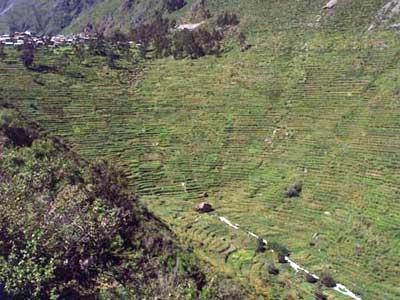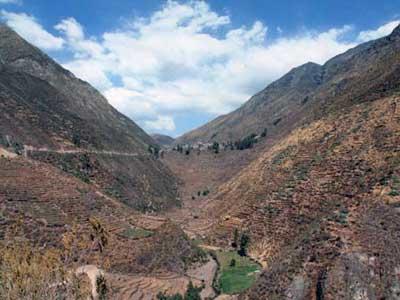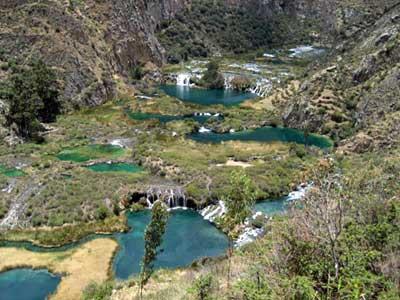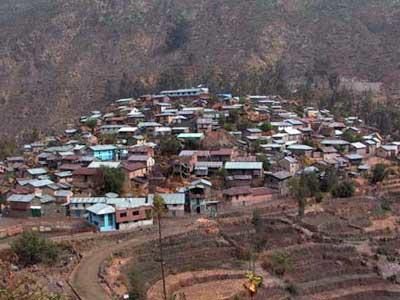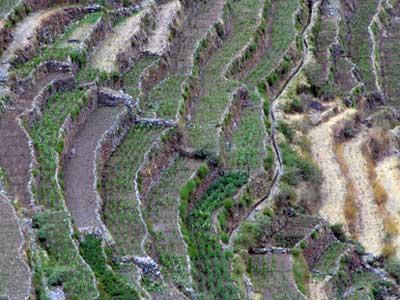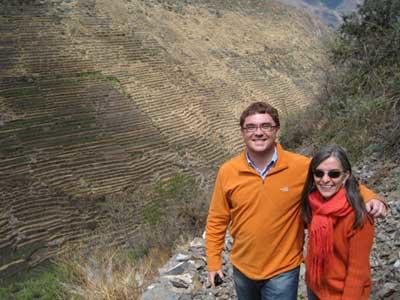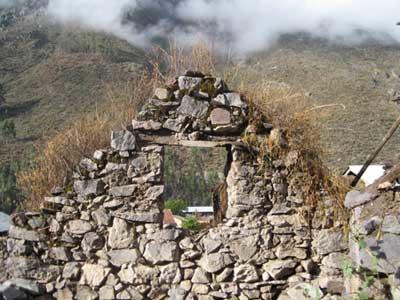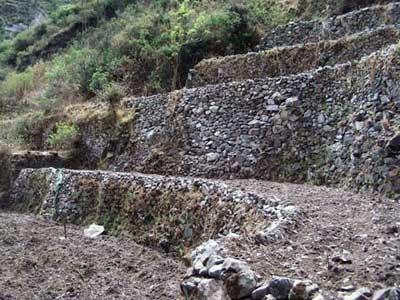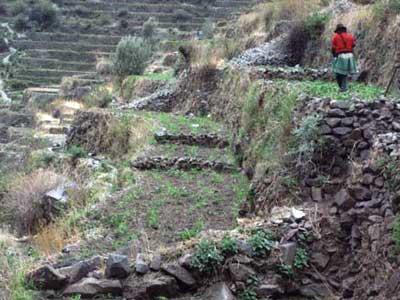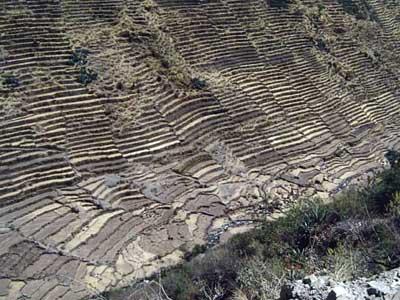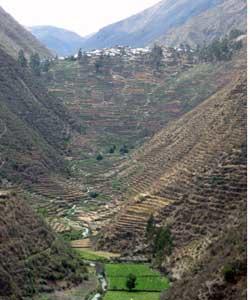Laraos Terraces
The andenería, or terraced landscape of Laraos, is believed to date to the pre-Inca period and is a defining feature of the steep slopes of the Peruvian Andes. Similar to the terraces in the Cuzco region, scholars believe that the design and technology used on the Laraos terraces were transferred to Cuzco. Several areas of the terraces are still maintained for traditional Andean crops using historic agricultural technology. The traditional hydraulic engineering for the irrigation system was particularly advanced when it was created, as water can be collected at higher elevations, conducted to the village, and distributed throughout the terraces. As with many traditional agricultural landscapes, these evocative vistas require significant effort to maintain, but are not as efficient and profitable as contemporary cultivation strategies in wider use. In addition, the region has experienced increased migration to urban areas by laborers seeking other economic and employment opportunities. With decreased cultivation, the terrace system has eroded. Another factor threatening the well-being of the cultural landscape is the increased contamination of the water supply from the waste of a nearby mine.
2008 World Monuments Watch
Since the Laraos terraces were included on the World Monuments Watch in 2008 portions of the terraces have been restored and the , irrigation systems have been improved. Conditions of dirt access roads have been improved as well. The local community, National Institute for Natural Resources and municipal authorities have recognized the potential in using the historic terraces for the cultivation of organic crops. Watch-listing made local, regional and national authorities aware of the value of conserving the Laraos terraces for their historic significance and the contribution they could make to the local economy, as well as providing a local, organic source for agricultural products. There are currently two NGOs working on the restoration of the terraces and the improvement of their crops. The work supported by WMF through the Butler Conservation Fund and performed by the Ministry of the Environment and the Municipality of Laraos in 2008 and 2009 included the completion of the Rural Community Tourism Development Plan, which focuses on the agricultural terraces; the rehabilitation of the andenes or historic agricultural terraces in the areas of Comunia, Choco and Huaqui, to improve the economic sustainability of local species, such as potatos and oca; and the rehabilitation of the path between Huachuco and Choco to allow cultivation in this area. The Ministry of the Environment and the municipal authorities have also sponsored tourism.
The Laraos terraced landscape is one of the largest of its kind in active use in Peru. The terraces contribute to the cultural identity of the region and are central to the concept of faena, a form of socioeconomic organization that relies on collective labor and sharing of yields. Activities such as maize planting and maintenance of irrigation canals are celebrated with ritual festivals and traditional dances, connecting the community in a variety of ways to the restoration and harvesting programs. The Laraos terraces serve as a model for modern cultural landscapes in similar communities by incorporating traditional skills with appropriate technology. Laraos is part of the protected area of the Reserva Paisajística Nor Yauyos Cochas, the first landscape reserve established in Peru, managed by the Ministry of the Environment.

